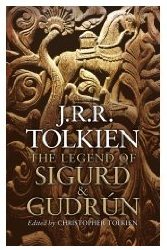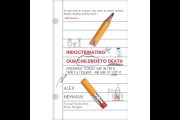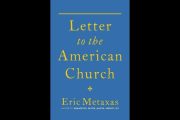
Since the publication of The Hobbit in 1937, and The Lord of the Rings in 1954–1955, J.R.R. Tolkien’s fiction has captivated generations of readers. The numerous printings and editions of his works have been met by seemingly innumerable imitators and commentators, and they spawned one of the most financially successful adaptations to film in history.
However, while many readers of his works are vaguely conscious of Tolkien’s academic background as a professor at Oxford University, most readers have little opportunity for a direct encounter with Tolkien’s academic accomplishments except insofar as they are derivatively experienced in his famous works of fiction.
The Legend of Sigurd and Gudrún (2009) may be something of a pleasant surprise to Tolkien enthusiasts. As with The Children of Húrin (2007), The Legend of Sigurd and Gudrún is a work which has been posthumously edited by the author’s son and literary executor, Christopher Tolkien. However, readers should understand that, unlike The Children of Húrin, The Legend of Sigurd and Gudrún is not directly connected to the mythological world of The Lord of the Rings, except by way of inspiration; The Legend is Tolkien’s retelling of one of the great legends of Northern European antiquity; it is not a volume of “lost tales” from the world of hobbits, but a lively encounter with the deep myths near the roots of our civilization.
The published volume contains two lengthy poems (or “lays”) entitled Völsungakviða en nýja (“The New Lay of the Völsungs”) and Guðrúnarkviða en nýja (“The New Lay of Gudrún”), as well as an essay entitled “The Elder Edda” by J.R.R. Tolkien, extensive commentaries on both lays, and three appendices related to the lays.
Tolkien’s inspiration for the two “New Lays” that make up the heart of this book is found in the Poetic Edda (or Elder Edda), a collection of Norse myths anonymously compiled in the 12th or 13th century by an Icelander. However, what is contained in the two lays of The Legend of Sigurd and Gudrún is not a translation from the Poetic Edda, but a retelling of the myths. (It might be hoped that readers of Tolkien’s retelling of these classical myths would profit from study of their origins in The Poetic Edda, making use of, for example, Lee M. Hollander’s excellent translation published by the University of Texas Press.)
Christopher Tolkien notes in the Introduction, “My father’s erudition was by no means confined to ‘Anglo-Saxon,’ but extended to an expert knowledge of the poems of the Elder Edda and the Old Norse language…. In fact, for many years after he became the professor of Anglo-Saxon at Oxford in 1925 he was the professor of Old Norse, though no such title existed; he gave lectures and classes on Norse language and literature in every year from 1926 until at least 1939. But despite his accomplishment in this field, which was recognized in Iceland, he never wrote anything specifically on a Norse subject for publication — except perhaps for the ‘New Lays,’ and for this, so far as I know, there is no evidence one way or the other, unless the existence of an amanuensis typescript, of unknown date and without other interest, suggests it.”
J.R.R. Tolkien’s accomplishments in writing the “New Lays” (and Christopher Tolkien’s labors in editing them) are truly amazing. Although the now-introductory essay was not originally written as a companion piece for the “New Lays,” it serves to establish the author’s estimation of the Poetic Edda, its place in the literature of the far North, and the difficulties that attended the transmission of the most significant text of the original poems; as Tolkien wrote, “When the ‘Elder Edda’ is mentioned, we practically mean a single manuscript — no. 2365 4º in the Royal Collection in Copenhagen: now known as the Codex Regius (of the Elder Edda). It contains 29 poems. There are 45 leaves of it left. After leaf 32 a gathering, probably of eight pages, has been lost.” (It is worth noting that in 1985 — years after Tolkien’s death — the Codex Regius was finally returned to the people of Iceland and is now on permanent display in the Culture House in Reykjavik.)
The cultural achievement that Tolkien accomplishes in his “New Lays” is impressive, to say the least. The form of the lays — writing them in the “Old Lore Metre” of the eight-line fornyrðislag stanza — captures the style of the original lays and conveys an elegance to the entire work. Also, drawing on his knowledge of the history of the myths, the ‘great lacuna’ — the missing eight pages — of the Poetic Edda is “filled in” by Tolkien’s retelling of the tale and recounting of the central events of Sigurd’s story. But the most important element of Tolkien’s “New Lays” is his recasting of the entire structure of Norse mythology.
One of the central events of Norse mythology is Ragnarok and the death of the "gods"; Ragnarok evinces a fundamental fatalism in the overall mythology: even the gods are not immune of death at the end of all things (although the Voluspá, the "Prophecy of the Seeress," which recounts the events of Ragnarok, ends on a note of optimism regarding a recovering after that day). In Tolkien’s retelling, Sigurd gains a central role in the events of Ragnarok as a promised “deathless” one, the “seed of Ódin”:
If in day of Doom
one deathless stands,
who death hath tasted
and dies no more,
the serpent-slayer,
seed of Ódin,
then all shall not end,
nor Earth perish.
The "innocent" death of Sigurd and his "necessary" gathering into the ranks of Valhalla becomes a central element in the story of the victory of the “leaguered Gods” — this is an element entirely new to the mythology. It is worth passing note that Christopher Tolkien recognizes a connection between such an understanding of Sigurd and J.R.R. Tolkien’s own mythology: “Túrin Turambar, the slayer of the great dragon Glaurung, was also reserved for a special destiny, for at the Last Battle he would himself strike down Morgoth, the Dark Lord, with his black sword.”
The connection of The Legend of Sigurd and Gudrún with the deep myths of Northern European civilization offers the reader useful insights into Tolkien’s own mythology which rests behind The Lord of the Rings, but even more importantly, the publication of this work provides an “accessible” means for reflecting on some of the most significant legends of pre-Christian antiquity. In this regard, J.R.R. Tolkien continues his professorial role: opening minds to study and appreciate the cultural heritage of Western civilization.
The Legend of Sigurd and Gudrún, J.R.R. Tolkien, Boston and New York: Houghton Mifflin Harcourt, 2009, 377 pages, hardcover, $26.00.



